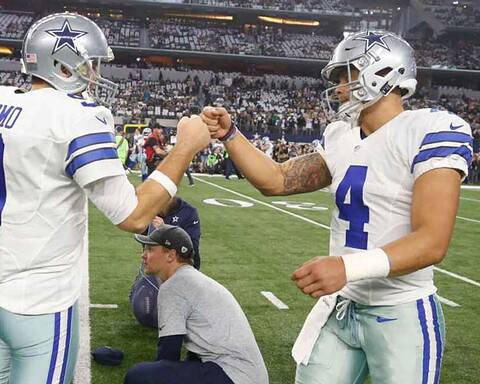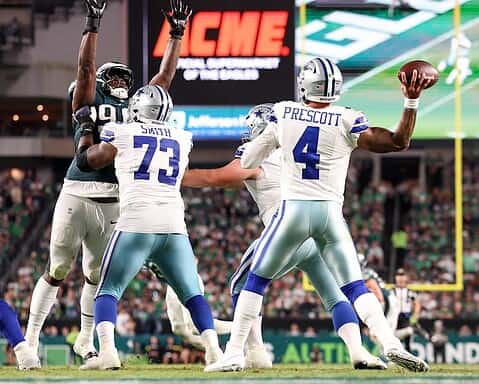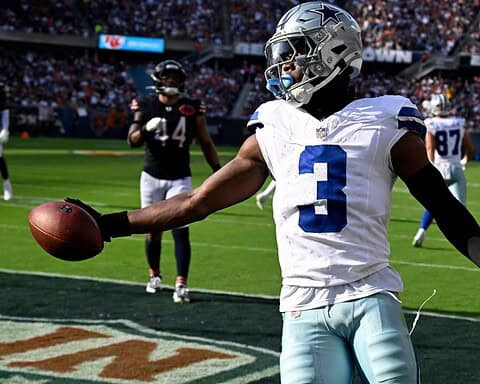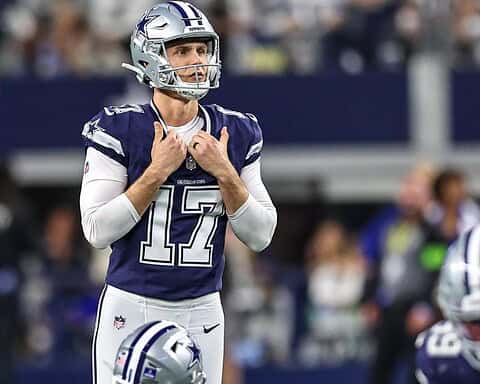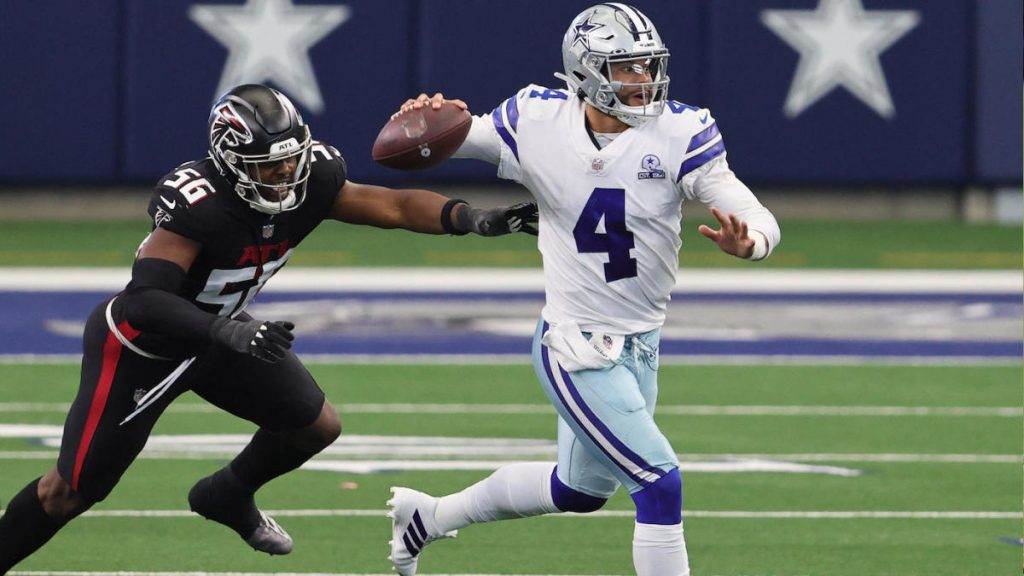As kids, didn’t you love looking at the back of baseball or football cards? I spent more time reading the box scores in the newspaper than I did reading the funny pages. Numbers and statistics are pervasive in sports and though every number requires some context and doesn’t completely work as a stand-alone stat, some numbers have an impact on the outcomes of sporting events. Football is no different as each game will be won or loss depending on the success in certain statistical categories.
As the Dallas Cowboys get ready to head to Washington, this matchup looks to favor the Dallas Cowboys tremendously. The Redskins will be without Jonathan Allen and Derrius Guice and look like they’ll be missing several defensive backs from their depth chart.
The Dallas Cowboys are still trying to get DeMarcus Lawrence and Byron Jones up to speed and will be without Tavon Austin this week.
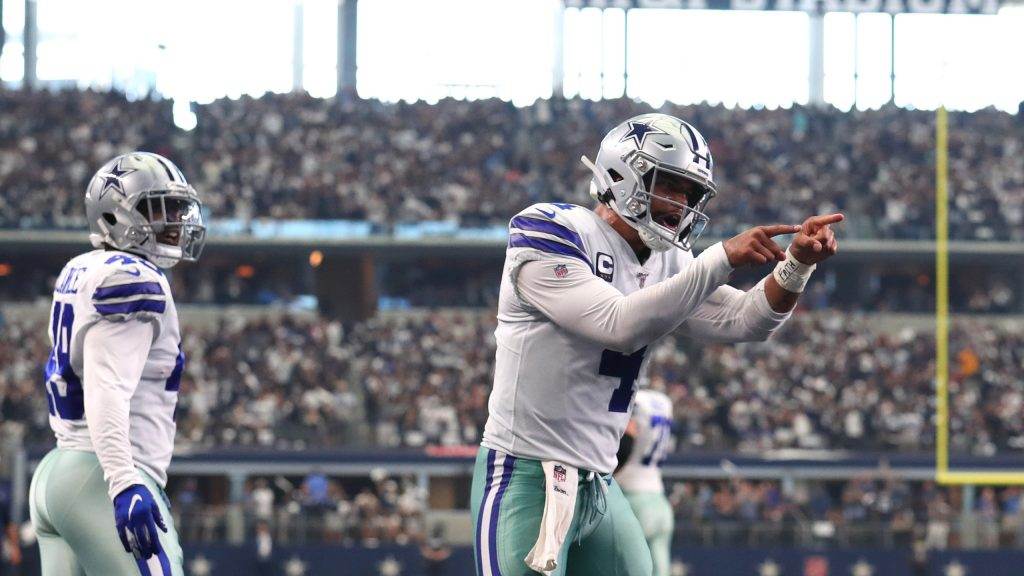
Deep Passing
Case Keenum: 2 of 4 for 91 yards and a touchdown. Allowed: 2 of 5 for 105 yards and 2 touchdowns.
Dak Prescott: 5 of 6 for 155 yards and 3 touchdowns. Allowed: 2 of 4 for 65 yards.
The Dallas Cowboys offense was tremendously successful throwing passes beyond 20 yards in week one against the New York Giants. Dak Prescott was accurate down the field as Blake Jarwin and Randall Cobb found wide-open space to run on their touchdown receptions. Amari Cooper and Michael Gallup made impressive basket catches of very well placed Dak Prescott throws. It was as impressive of a deep passing performance as we’ve seen from Dak in his now 49 regular season starts. If that’s any indication of the offensive gameplan that Kellen Moore is going to devise week in and week out, the Dallas Cowboys are going to be one of the more explosive teams in the NFL in 2019.
On defense, the Cowboys were equally effective in slowing down the New York Giants deep passing game. Some of that was because Eli Manning has lived off of the short to intermediate passing game in recent years because of the New York Giants porous offensive line. The other part is that the Dallas Cowboys just didn’t give them a lot of opportunities to hit plays down the field. Even on one of the two passes that they were able to complete beyond 20 yards, Dallas Cowboys Cornerback Chidobe Awuzie was in perfect position, he just didn’t see the ball coming in and wasn’t able to defend the pass.
For the Washington Redskins, Case Keenum was able to make a couple of plays downfield to rookie wide receivers Kelvin Harmon and Terry McLaurin. McLaurin had an opportunity at another big gain down the field as he ran past the Philadelphia Eagles secondary only to be overthrown by Keenum with room to run.
Against the Eagles and primarily DeSean Jackson, the Redskins defense lost track of him a couple of times and he was able to make them pay with long touchdown receptions and runs. Though they held the Eagles to a 40% completion percentage on passes of 20 yards or more, both were to Jackson, both went for touchdowns and both were in the second half of the game. This was when Jonathan Allen was lost to an MCL Sprain and would be able to return.
Summary
Allen will be missing from this week’s matchup, which bodes well for the Dallas Cowboys and their deep passing game. If the front of the pocket is able to hold up against the rest of the Redskins front seven, then Prescott will be able to step up and throw deep when opportunities arise. Prescott showed with his throws to Cooper and Gallup that they don’t need to be wide-open for him to release the ball.
On the defensive side of the football, the Dallas Cowboys have a much better secondary than the Philadelphia Eagles. If the Cowboys play sound schematically, they should be able to limit any big pass plays.
Advantage: Dallas Cowboys
Pressures Allowed
Washington Redskins Pressures: 10. Allowed: 17.
Dallas Cowboys Pressures: 14 Allowed: 2.
Per Pro Football Focus, a pressure is considered a hurry, a quarterback hit, or a sack. The Dallas Cowboys and the Washington Redskins’ defenses both put a lot of pressure on the quarterback in week one.
The biggest difference is that the Cowboys were able to limit the pressure the New York Giants were able to put on the Dallas Cowboys. Of course, the Dallas Cowboys were playing a more inferior defensive line than the Washington Redskins were, but the Cowboys also have a better offensive line than the Washington Redskins.
Again, Jonathan Allen missing is a huge blow for the Redskins, but they still have some very capable pass rushers in Ryan Kerrigan and Da’Ron Payne. Those two will be a huge test for the Dallas Cowboys offensive line, but with the way they’re playing, they’ll hold up well enough to give Dak Prescott time to make his throws in the passing game.
Summary
The Dallas Cowboys offensive line is much improved from a year ago. In the first matchup against the Washington Redskins, Dak Prescott was under pressure a lot. Going into the first of two 2019 matchups, the Cowboys with Travis Frederick back, La’el Collins playing more comfortable technique, and Connor Williams bulked up, will be better suited to perform well against the Washington Redskins.
On the flip side, the Washington Redskins are starting Ereck Flowers at guard and are missing Trent Williams at left tackle. That should provide opportunities for the Dallas Cowboys defensive line to put pressure on Case Keenum. They may not disrupt him as much as the Philadelphia Eagles did, but they’ll be able to effect Keenum’s ability to stay comfortable in the pocket.
Advantage: Dallas Cowboys
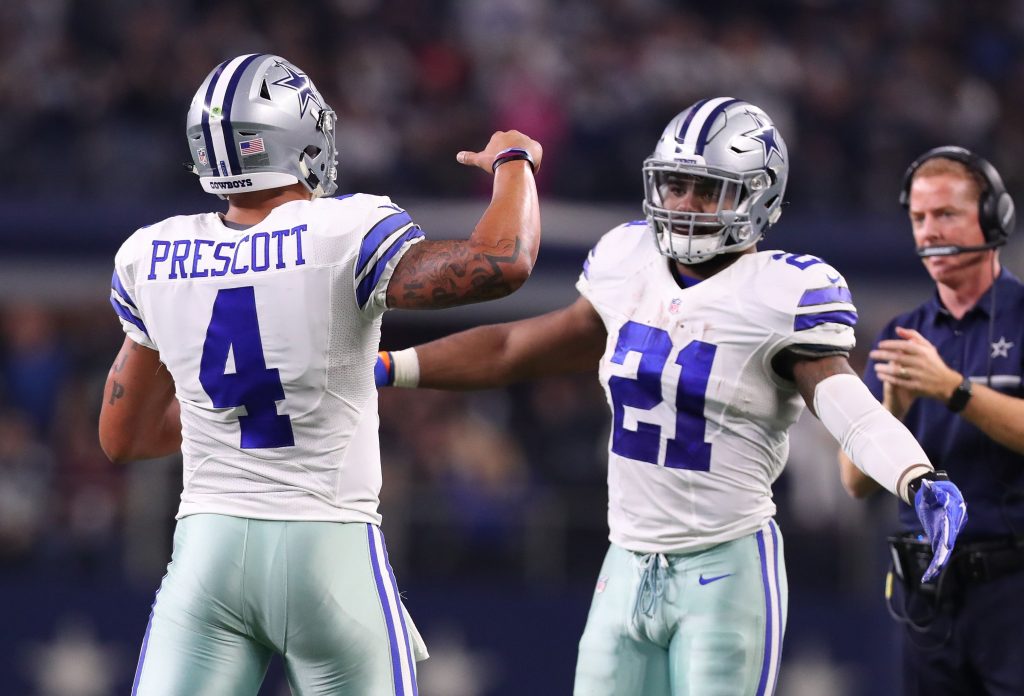
Rushing Yards
Washington Redskins gained: 28. Allowed: 123.
Dallas Cowboys gained: 89. Allowed: 151.
This week we should see Ezekiel Elliott get closer to the 20 carries we’ve all grown accustomed to in his three seasons in the NFL. It’s likely that Elliott would have closed in on that number last week against the New York Giants had the Cowboys not been leading by 25 points heading into the fourth quarter. Instead, Elliott only had 13 rush attempts, which is the same number that Tony Pollard had.
Earlier this week, Elliott stated he’s ready for his regular workload, and as long as the game is close, he’ll probably get that workload.
On defense, the Dallas Cowboys struggled to slow down the dynamic Saquon Barkley as he rushed for 120 yards on 11 carries. Even if you take away the 59-yard run Barkley had on the first drive of the game, he still averaged 6.1 yards per carry the rest of the game.
After last year’s debacle in the divisional round of the playoffs, it appears as if the Cowboys may have some struggles against the run in 2019. This week, they’ll get an opportunity to rectify the situation as they’ll face a Redskins team that only rushed for 28 yards on 13 carries. That ineffectiveness allowed the Eagles defensive line to pin their ears back and rush the passer.
On the other side of the ball, the Redskins struggled to stop the three-headed monster trotted out by the Philadelphia Eagles. The trio of Jordan Howard, Miles Sanders, and Darren Sproles combined for 26 carries and 116 yards, an average 4.46 yards per carry.
Summary
The Dallas Cowboys should be able to find some running room against the Washington Redskins. With Jonathan Allen out, that’s one less talented player for the offensive line to have to deal with in the running game. Ezekiel Elliott was effective last week, but this week could be his first 100 yard game of the season.
The Dallas Cowboys won’t have to face Derrius Guice, but instead, Adrian Peterson. The Cowboys should be able to slow down the running game and force the Redskins into longer down and distances.
Advantage: Dallas Cowboys
Yards Per Attempt Allowed
Washington Redskins: 8
Dallas Cowboys: 6.7
As we’ve seen for the last year, the Dallas Cowboys secondary does a really good job at limiting big plays in the passing game. Their ability to play sticky coverage, combined with the pass rush makes it difficult for teams to win consistently down the field.
Last week against the New York Giants, Dak Prescott averaged 12.7. That’s really hard to do, even against a bad secondary. The Redskins allowed Carson Wentz to average eight yards per attempt in week one and with only two completions of 20 yards or more. Prescott had five of those and several more of 15 yards or more.
Eli Manning wasn’t able to get much accomplished down the field, even though he did throw for 300 yards. A lot of that was in the short to intermediate part of the field when the Cowboys pretty much had the game in hand.
For Keenum to have consistent success drive after drive, he’s going to have to hit some big plays in the passing game.
Summary
The Dallas Cowboys defense has excelled over the last couple of years playing a “bend, don’t break” style of football. They may give up a lot of yards in the passing game, but they lock it down when the opponent crosses midfield. On Sunday, the Giants were able to cross midfield seven times, but only came away with points three times. The Cowboys keep the plays in front of them and force teams to drive the field.
Driving the length of the field is a very difficult task for even good offenses to do on a regular basis, let alone an average offense like the Redskins.
Advantage: Dallas Cowboys
Time to Throw
Dak Prescott: 2.53 per Next Gen Stats, 2.25 per Pro Football Focus
Case Keenum: 2.85 per Next Gen Stats, 2.68 per Pro Football Focus
By whichever advance stat company you choose to subscribe to, Dak Prescott is getting the ball out significantly faster in 2019 than he was in 2018. In 2018, Prescott averaged 2.82 seconds to attempt according to Next Gen Stats and 2.98 seconds to attempt per Pro Football Focus. He’s sliced nearly 3/4 of a second off his time to attempt year over year per PFF through one game. That’s a lifetime in the NFL.
Prescott was decisive on Sunday against the Giants and made his reads quickly and got rid of the football. Rarely did you see Prescott hold onto the football and have to scramble to make a play with his arm.
With Kellen Moore calling the plays, there use of play-action and RPOs allowed Dak to make quick reads and quick throws.
Though Keenum was under more pressure against the Eagles than Dak was against the Giants, he still held onto the football longer and was only sacked one time. That’s a surprising testament to the Redskins offensive line and to Keenum, who despite missing a couple of starters on the offensive line was willing to hang in the pocket under duress.
Summary
Dak Prescott will need to continue getting the ball out quick against a better Washington Redskins pass rush. If he’s able to do that, then the Cowboys should continue to have tremendous success in the passing game.
Generally getting the ball out quicker indicates more success in the passing game, though a lot of your more mobile passers tend to hold onto the ball longer as they are more capable of extending plays with their legs. Between Prescott and Keenum, there’s no doubt that Prescott is the more mobile player.
Dak, however, has made a concerted effort since the preseason to make quicker more decisive throws in 2019. He’s reading the defense better and knowing where he wants to go with the football before the ball is snapped. If he’s able to win before the snap on Sunday against the Washington Redskins, then I’d imagine Prescott continues to get the ball out pretty quickly.
Advantage: Dak Prescott
✭ ✭ ✭ ✭ ✭
It’s impossible to come to any grand conclusions with just one week of data points to consider, but if these things continue to hold up in week two, it should be a pretty decisive victory for the Dallas Cowboys. However, through that one game, the Dallas Cowboys have a distinct advantage over the Redskins in a lot of these and other key categories.
If it plays out on the field as it does on the stat sheet, the Dallas Cowboys should win this game handily.
Prediction: Dallas Cowboys 30 – Washington Redskins 14
Have a prediction for Sunday’s game? Drop it in the comment section!
Statistical information from Next Gen Stats, Pro Football Focus, and Pro Football Reference.



